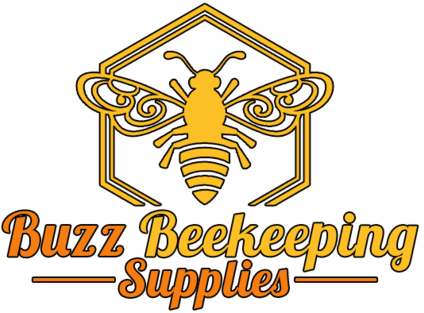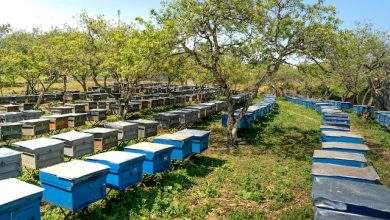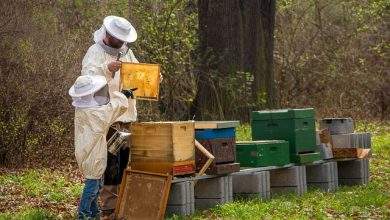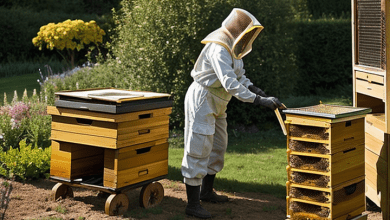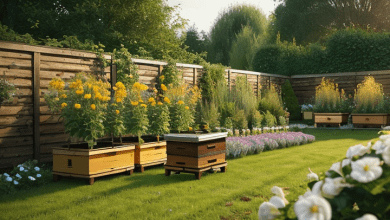Beekeeping Supplies Maryland
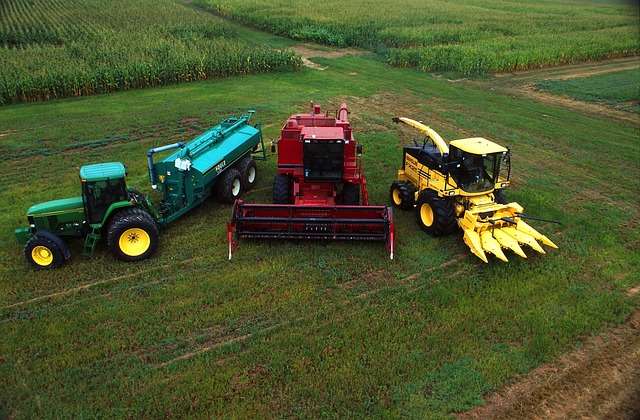
Beekeeping has become increasingly popular in Maryland, as more people recognize the importance of supporting pollinator populations and local ecosystems. However, success in beekeeping relies on the use of high-quality supplies and equipment.
In this article, we will explore the essential beekeeping supplies available in Maryland and why they are crucial for the health and productivity of bee colonies.
No matter where you are looking for beekeeping supplies in Maryland, we’ve got you covered.
Beekeeping in Maryland
- Maryland is known for its diverse flora, providing bees with an abundant source of nectar and pollen, resulting in a thriving honey industry.
- As of the latest data available, there are approximately 2,000 registered beekeepers in Maryland, managing an estimated 15,000 honeybee colonies
- The number of beekeepers in Maryland has been steadily increasing over the past decade, indicating a growing interest in beekeeping as a hobby or business venture.
Beekeeping Equipment
First and foremost, the quality of beekeeping supplies plays a critical role in ensuring the well-being of bee colonies. From durable hives to protective gear, using reliable equipment can make a significant difference in the success of beekeeping operations.
In Maryland, beekeepers have access to a wide range of supplies, including high-quality beehive components, protective gear, and tools for hive management. These supplies are essential for the proper care and maintenance of bee colonies, ultimately contributing to healthier and more productive bees.
Beehive Components:
Beekeeping is a time-honored practice that requires the proper equipment to ensure the well-being of honeybee colonies. Before embarking on a journey in beekeeping, it is crucial to have a good understanding of the necessary bee supplies.
- Hive Boxes: Hive boxes, also known as supers, serve as the living quarters for honeybees and their honeycombs. It is crucial for beekeepers to select the right hive style, such as Langstroth, top bar, or Warre hives, based on their preferences and the needs of their bees.
- Frames: Frames suspended within each hive box provide structural support for the honeycombs and serve as a foundation for brood rearing and honey storage. Well-assembled frames are vital for the bees’ ability to organize their colony and facilitate beekeeping management.
- Bottom Boards: Bottom boards act as the base of the beehive, offering stability and ventilation while providing an entrance for the honeybees to come and go freely. They also serve as a line of defense against intruders.
- Inner Covers and Outer Covers: Completing the structural integrity of the hive, inner covers and outer covers provide insulation and protection to the honeybees. Inner covers add an extra layer of insulation, while outer covers shield the hive from harsh weather conditions.
Having high-quality hive boxes, frames, bottom boards, inner covers, and outer covers is crucial for successful hive management. It is important to accommodate various stages of bee colony growth and to maintain the comfort and productivity of honeybees.
Protective Gear:
Beekeeping is an intricate and rewarding endeavor that requires the right protective gear to ensure safety and comfort during beekeeping activities.
Bee Suit: A bee suit is an essential piece of protective clothing that offers invaluable defense against bee stings and ensures comprehensive coverage during beekeeping activities. There are two primary types of bee suits to consider:
- Canvas Beekeeping Suits: Canvas beekeeping suits are known for their durability and outstanding resistance to bee stings. They provide robust protection for beekeepers, making them a reliable choice for beekeeping expeditions.
- Ventilated Bee Suits: Crafted with breathable mesh fabric, ventilated bee suits allow beekeepers to work comfortably in hot weather conditions while still ensuring steadfast protection from bee stings.
Bee Gloves: The selection of the right pair of beekeeping gloves is crucial to safeguarding hands against stings while preserving dexterity. There are two primary options to consider:
- Goatskin Bee Gloves: Celebrated for their exceptional tactile sensitivity, goatskin bee gloves empower beekeepers to handle delicate tasks with ease while shielding against stings.
- Cowhide Bee Gloves: With their thick leather construction, cowhide bee gloves provide robust protection, assuring beekeepers’ hands remain safe throughout beekeeping activities.
Beekeeping Boots: Beekeeping boots are engineered to impede bee access to the feet, making them an essential addition to beekeeping supplies. They ensure that feet remain safeguarded during tending of honey bee colonies.
Beekeeping Veil: A dependable beekeeping veil, meticulously created from fine mesh, plays a critical role in shielding the face and neck from bee stings. It offers optimal visibility while preventing bee contact with the skin. Additionally, many bee suits come equipped with a detachable veil for added convenience.
Purchasing Options and Considerations
In many instances, beekeepers can procure a combo pack consisting of a bee suit and bee gloves at a discounted price, providing a convenient and cost-effective solution for acquiring essential protective clothing for beekeeping.
Investing in superior-quality protective gear is pivotal for beekeepers to guarantee safety and comfort during their beekeeping endeavors. Acquiring a comprehensive understanding of the diverse options available for bee suits, gloves, boots, and veils empowers beekeepers to make informed decisions that will elevate their beekeeping journey.
Essential Beekeeping Tools:
As a beekeeper in Maryland, it is crucial to have the right tools to effectively manage your hives. In this article, we will explore some of the most vital beekeeping tools that every beekeeper should have in their arsenal.
- Hive Tool: The hive tool is an invaluable instrument used for separating and prying apart hive components during inspections. With its flat blade and curved hook design, beekeepers can effortlessly lift frames, scrape off excess propolis, and remove burr comb. The sturdy construction of the hive tool ensures that beekeepers can efficiently dismantle and reassemble their hives without causing harm to the bees or equipment.
- Bee Smoker: The bee smoker is an indispensable tool for calming honeybees during hive inspections. It significantly aids beekeepers by making their work easier and safer. By emitting cool smoke that masks the alarm pheromones released by guard bees, the smoker helps pacify the colony and minimizes the risk of stings. Furthermore, the smoke triggers a feeding response in bees, reducing their inclination to sting. For effective hive management, every beekeeper should keep a smoker and extra fuel on hand.
- Bee Brush: The bee brush is designed with the utmost care for the bees’ well-being, allowing beekeepers to gently move bees away from specific areas during inspections. Its soft bristles ensure that the bees are not harmed or stressed during the process. This tool keeps the bees calm and prevents unnecessary crushing or injuries, establishing harmonious interaction between beekeepers and their cherished honeybees.
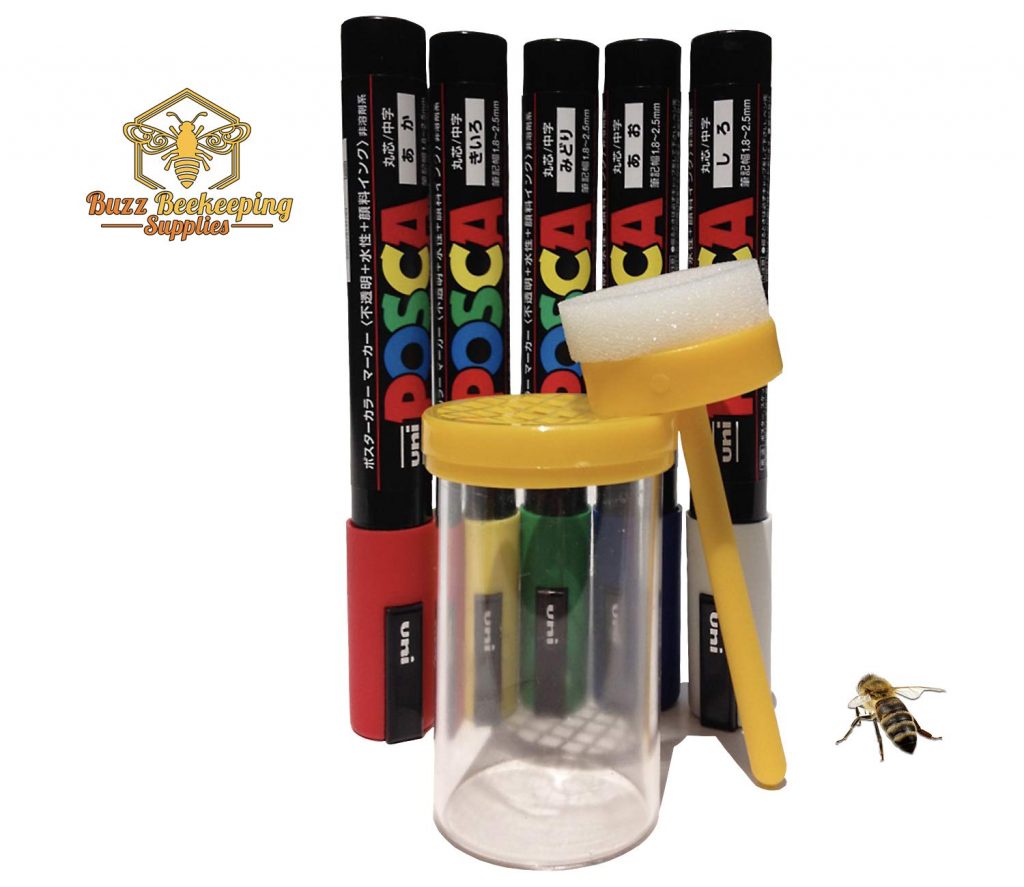
- Queen Marking Tools: Queen marking tools are essential for identifying and tracking the queen bee within a colony. These tools usually consist of small, colored plastic or metal markers that can be applied to the queen’s thorax. The color-coded system established by beekeeping associations provides vital information about the queen’s age and year, enabling beekeepers to easily locate and monitor her during hive inspections. This reduces the risk of accidentally harming or misplacing the queen while effectively ensuring the health and longevity of the colonies.
Beekeeping tools are essential for effective hive management in Maryland. Beekeepers must equip themselves with the necessary tools to ensure the well-being of their bees and the success of their beekeeping operations.
Hive Feeders:
Hive feeders are essential tools that empower beekeepers to offer vital nourishment to their bees. These feeders are specifically designed to hold various types of supplemental food, such as sugar syrup or pollen substitute, that can be readily consumed by the bees. By providing an accessible and controlled source of nutrition, hive feeders are instrumental in ensuring that bee colonies have the energy necessary to thrive, produce honey, and expand their population.
Types of Hive Feeders
- Entrance Feeders: Among the various types of hive feeders, entrance feeders stand as a popular choice among beekeepers. Positioned near the hive entrance, these feeders grant easy access to supplemental food for the bees. Typically, they consist of a small container or tray with small holes or slots to prevent drowning while allowing the bees to feed. Known for their simplicity of use and monitoring, entrance feeders cater to beekeepers of all experience levels.
- Boardman Feeders: Another commonly utilized hive feeder is the Boardman feeder, particularly favored by novice beekeepers. Similar to entrance feeders, they are placed at the hive entrance and feature a small plastic or glass jar with tiny holes or slits on the lid, facilitating easy access for the bees. Boardman feeders are often used with commercially available sugar water mixes and can hold larger volumes of food compared to entrance feeders.
- Top Feeders: Unlike entrance and Boardman feeders, top feeders are positioned directly on top of the hive, just below the outer cover. With their larger capacity, top feeders can hold significant amounts of food, making them suitable for feeding larger colonies or when substantial supplemental food is required. Equipped with floats or caps to prevent drowning, this type of feeder allows beekeepers to provide ample food without frequent disturbances to the hive.
- Division Board Feeders: Division board feeders, typically positioned inside the hive, replacing one or more frames in the brood nest area, ensuring easy access and minimal disruption to the hive’s organization. These feeders can hold liquid feed, such as sugar syrup or pollen substitute, serving as an efficient means of nourishing the bees. They prove particularly useful during unfavorable weather conditions, such as cold or rainy periods, as they reduce bees’ exposure to external elements while ensuring their nutritional needs are met.
Hive feeders play a vital role in maintaining and promoting the well-being of bee colonies. By understanding the different types of hive feeders and their functions, beekeepers can effectively support their bees’ nutritional requirements, contributing to the overall health and productivity of the hives.
Feeding Bees: Enhancing Honeybee Nutrition for Health and Efficiency
Honey is the primary source of nourishment for honeybees, but there are instances where supplementary feeding becomes necessary to ensure the bees’ well-being and productivity.
Sugar Syrup: Sugar syrup is a widely used supplementary food source for honeybees. It is prepared by dissolving granulated sugar in water, providing beekeepers with a convenient option for feeding their bees.
- Ease of Preparation: Creating sugar syrup is a straightforward process that involves dissolving granulated sugar in water.
- Ratios: For spring and summer feeding, a common ratio is 1 part granulated sugar to 1 part water, while a ratio of 2 parts sugar to 1 part water is recommended for fall feeding.
- Safety First: When making sugar syrup, it is important to use only granulated white sugar and avoid other sweeteners such as honey or brown sugar.
Protein Patties: During periods of limited natural pollen sources, protein patties can serve as an alternative to boost the bees’ protein intake. Protein patties are typically made with a base of soy flour, brewer’s yeast, and essential nutrients to supplement the bees’ diet during times of natural protein scarcity.
Pollen Substitute: Pollen substitutes can be utilized to meet the dietary needs of bees when natural pollen sources are limited. Beekeepers can obtain commercially available pollen substitutes, which can be mixed with water to form a patty-like consistency, providing an alternative source of nutrition for the bees. Here is a video of a DIY pollen feeder.
Probiotic Supplements: As with humans, bees benefit from mineral and vitamin supplementation, including beneficial microflora that can support gut health and immunity.
Providing honeybees with a well-rounded diet is essential for their overall well-being and productivity. While honey serves as their primary source of nutrition, supplementing their diet with sugar syrup, protein patties, and pollen substitutes can significantly contribute to their optimal health.
Pest Control Products for Beekeepers: Protecting Honeybee Colonies
Beekeepers understand the importance of effective pest control in safeguarding honeybee colonies against potential threats and diseases. Prioritizing pest control measures is crucial to maintain the health and well-being of bee colonies and prevent any detrimental effects on their productivity.
Varroa Mite Treatments: Varroa mites pose a significant danger to honeybee colonies as they feed on adult bees and their developing brood. Hence, controlling Varroa mite populations is paramount for beekeepers to preserve the health of their colonies and prevent potential demise.
- Chemical Treatments for Varroa Mites: Beekeepers commonly utilize chemical treatments, such as oxalic acid or formic acid, to effectively reduce Varroa mite infestations in bee hives. Adhering to the manufacturer’s instructions, these treatments prove to be successful in minimizing the impact of Varroa mites on honeybee colonies.
- Organic Alternatives for Varroa Mite Control: For beekeepers who prefer natural alternatives, organic treatments for Varroa mite control are available. Thermal treatments, thymol-based products, and essential oils have shown effectiveness in managing Varroa mite infestations, providing an environmentally friendly approach to pest control.
Wax Moth Control: Wax moths can cause significant damage to honeybee hives by infesting them and feeding on beeswax comb. Therefore, proactive management of wax moth populations is crucial to prevent harm to bee colonies.
- Chemical Treatments for Wax Moth Control: Utilizing chemical treatments such as paradichlorobenzene or freezing frames effectively targets and eliminates wax moth populations, reducing the risk of damage to beeswax comb and maintaining overall colony health.
Hive Beetle Control: Hive beetles can inflict damage on bee colonies by infesting hives and causing harm to the brood, honey, and overall colony health. Various methods are utilized to combat this pest effectively.
- Hive Beetle Traps: Different trap designs, such as oil-based traps, screen-type traps, or natural traps utilizing diatomaceous earth, are available to control hive beetle populations.
- Thermal treatments: Controlled thermal treatments, subjecting the infested hive to specific temperatures, have proven to be an effective method in controlling hive beetles without harming the bees.
Maintaining effective pest control in beekeeping is essential to protect honeybee colonies from potential threats and diseases. Varroa mite treatments, wax moth control, and hive beetle control are crucial aspects that require diligent attention from beekeepers to preserve the health and productivity of their hives.
Essential Extraction and Processing Equipment
Beekeepers rely on efficient extraction equipment to harvest honey from beehives effectively. The right tools, such as honey extractors, uncapping tools, honey filters, honey buckets, wax melters, and bottling supplies, are crucial for maintaining the quality of harvested honey and minimizing waste.
- Honey Extractors: Honey extractors are specially designed to remove honey from honeycomb frames using centrifugal force, without causing damage. Manual and electric models offer different advantages, catering to individual harvesting preferences and needs.
- Uncapping Tools: Uncapping tools, including uncapping knives, electric uncapping knives, and uncapping forks, are essential for removing wax caps from cells before placing frames in the honey extractor. These tools streamline the honey extraction process.
- Honey Filters: Honey filters, also known as honey strainers or sieves, guarantee high-quality honey by removing impurities and debris. Equipped with fine mesh screens, these filters ensure purity and clarity in the harvested honey.
- Honey Buckets: Food-grade buckets are ideal for storing extracted and filtered honey. These buckets, crafted from food-safe materials with airtight lids, ensure the freshness and purity of the stored honey.
- Wax Melters: Wax melters play a crucial role in efficiently extracting and purifying beeswax, minimizing waste and maximizing resources for beekeepers.
- Bottling Supplies: Including jars, lids, labels, and honey dispensers to ensure proper storage and presentation of honey.
Efficient honey harvesting relies on the use of the right extraction equipment. From honey extractors to uncapping tools, honey filters, and bottling supplies, each tool plays a vital role in maintaining the quality of harvested honey and ensuring the success of beekeeping operations.
Advanced Beekeeping Equipment
Beekeeping is a sophisticated and intricate craft that demands the use of advanced equipment to prioritize the vitality and output of bee colonies.
- Queen Excluder: One of the most crucial tools for advanced beekeepers is the queen excluder. This device plays a vital role in efficiently extracting honey and maintaining a hygienic environment within the colony by separating the queen from specific areas of the hive. Typically constructed of a grid or mesh material with openings large enough for worker bees to pass through easily but small enough to prevent the queen’s passage, the queen excluder is strategically positioned between the brood chamber and honey supers.
- Queen Rearing Supplies: Thriving bee colonies rely on the use of advanced queen rearing supplies to nurture replacement queens and support overall growth and development. Equipment such as queen cages, grafting tools, and mating nucs are essential for beekeepers seeking to raise robust and healthy queens.
- Pollen Traps: Pollen traps play a vital role in collecting pollen for the nourishment of bee colonies. Advanced traps ensure efficient pollen collection without jeopardizing the hive’s integrity.
- Honey Refractometer: The honey refractometer is a valuable device for accurately measuring the moisture content of harvested honey. This tool safeguards the quality and longevity of honey by ensuring optimal moisture levels, protecting against fermentation and spoilage.
- Propolis Traps: Maintaining hive hygiene and health is crucial, and propolis traps efficiently gather propolis while promoting a hygienic environment within the hive.
- Hive Monitoring Devices: Integrating technology with beekeeping, hive monitoring devices offer valuable insights into colony conditions with sensors and probes. These devices provide essential data on parameters such as hive temperature and humidity levels, empowering beekeepers to make informed decisions and prioritize the health and productivity of their bees.
Advanced beekeeping equipment truly revolutionizes beekeeping practices by enhancing efficiency, productivity, and the well-being of bee colonies. From managing the queen’s movements to supporting queen rearing and harnessing data-driven insights, the utilization of advanced tools elevates beekeeping practices and promotes successful beekeeping operations.
Maintaining Beekeeping Supplies
Beekeeping supplies play a vital role in the success of beekeeping operations. Proper maintenance is key to ensuring the longevity and functionality of these essential tools.
- Proper Storage and Maintenance: It is crucial to store beekeeping supplies in a dry and secure location to prevent damage and deterioration. Regular maintenance practices, such as cleaning and oiling, can significantly extend the lifespan of these supplies.
- Regular Cleaning and Inspection: Regular cleaning and inspection of beekeeping supplies are essential to ensure they are in good working condition and free from contaminants. This practice is vital for maintaining hygiene and functionality.
- Upgrading and Replacing Worn-Out Equipment: Over time, beekeeping supplies may become worn out and require replacement. Upgrading to newer and more efficient equipment benefits both the bees and the beekeeper. Regularly assessing the condition and replacing worn-out equipment ensures smoother operations.
- Staying Informed: Keeping up with advancements in beekeeping technologies is crucial. Staying informed about new technologies can improve beekeeping practices, enhancing operations and efficiency.
- Resourcefulness: In some cases, beekeepers may need to find creative and do-it-yourself (DIY) solutions to overcome challenges or meet specific equipment needs. Being resourceful and finding innovative solutions ensures the smooth functioning of beekeeping activities.
Maintaining beekeeping supplies is crucial for the success of beekeeping operations. Proper storage, regular cleaning and inspection, upgrading worn-out equipment, staying informed about new technologies, and resourcefulness are essential for ensuring the longevity and functionality of beekeeping supplies.
Where to Buy Bees and Nucleus Hives in Maryland
If you’re in Maryland and in the market for queen bees, packaged bees, or nucleus hives (nucs), you’re in luck. There are several reputable sources in the state where you can purchase these beekeeping essentials.
- Bee Clubs: Local bee clubs are an excellent starting point for sourcing bees in Maryland. These clubs can connect you with trusted suppliers who can provide you with high-quality queen bees, packaged bees, and nucs. By going through these recommended channels, you can be confident in the health and quality of the bees you acquire for your beekeeping endeavors.
- Local Breeders: Buying bees directly from local breeders is another viable option in Maryland. This approach allows you to inspect the bees and their living conditions firsthand before making a purchase, giving you peace of mind regarding the quality of the bees you bring into your apiary.
- Online Sources: For those who cannot find bees locally, online suppliers offer a convenient alternative. When opting for this route, it’s crucial to conduct thorough research to ensure that you’re dealing with a reputable and reliable supplier. Avoid purchasing bees from unverified sources, as there is a risk of receiving old queens, substandard equipment, or bees with diseases. Be cautious of making purchases from platforms like Craigslist, as the quality and health of the bees may not be guaranteed.
- Farm Supply Stores: Many farm supply stores in Maryland also carry a range of beekeeping supplies. These stores typically offer a variety of agricultural and livestock-related products, including beekeeping equipment. It’s worth checking these stores for your bee sourcing needs.
- Beekeeping Conferences and Events: Keeping an eye out for beekeeping conferences and events in Maryland is another fruitful avenue for purchasing bees and nucleus hives. These gatherings often feature reputable bee suppliers, giving you the opportunity to purchase bees while also engaging with experts in the beekeeping industry.
In Maryland, beekeepers have various options for purchasing bees, including local clubs, breeders, online suppliers, farm supply stores, and beekeeping events. Through these channels, bee enthusiasts can find high-quality queen bees, packaged bees, and nucleus hives to support their beekeeping ventures.
State Association
The state association is the Maryland State Beekeepers Association.
Here is a list of local bee clubs in Maryland:
- Allegheny Mountain Beekeepers Association
- Anne Arundel Beekeepers Association
- Association of Southern Maryland Beekeepers
- Baltimore Backyard Beekeepers Network
- Baltimore-Filbert Street Community Garden Bee Club
- Bowie-Upper-Marlboro Beekeepers Association
- Carroll County Beekeepers Association
- Central Maryland Beekeepers Association
- Frederick Backyard Beekeepers Association
- Frederick County Beekeeping Association
- Howard County Beekeepers Association
- Lower Eastern Shore Beekeepers Association
- Montgomery County Beekeepers Association
- Susquehanna Beekeepers Association
- Upper Eastern Shore Beekeepers Association
- Washington County Beekeepers Association
- Wye River Beekeepers
The Benefits of Joining a Beekeeping Club
Joining a beekeeping club can provide numerous benefits for beekeepers of all levels, from novice to experienced. The networking opportunities, knowledge sharing, access to resources, and sense of community and support make beekeeping clubs a valuable asset for anyone passionate about beekeeping.
Conclusion
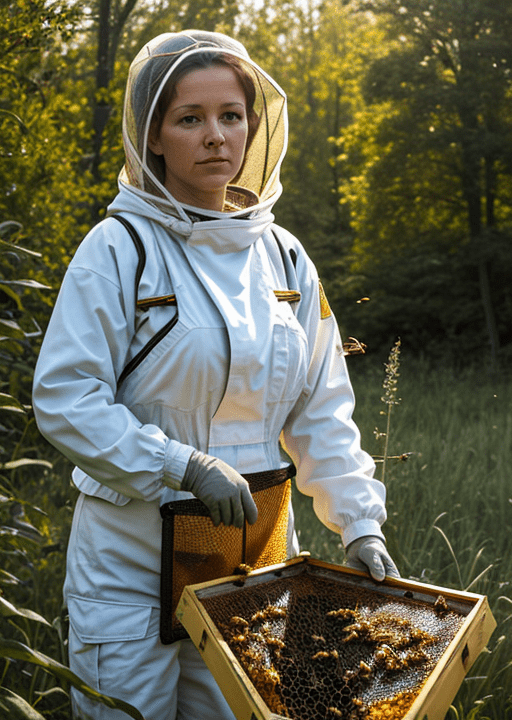
Beekeeping supplies in Maryland are essential for the success and sustainability of beekeeping operations. By utilizing high-quality equipment, accessing education and resources, and prioritizing bee health, beekeepers can contribute to the preservation of local ecosystems and the well-being of pollinator populations.
FAQ’s:
What essential beekeeping supplies do I need to start a hive in Maryland?
To start a hive in Maryland, you will need the following essential beekeeping supplies:
- Beehive: A structure where bees live and store honey, such as a Langstroth hive.
- Frames and Foundation: These provide structural support and a base for bees to build wax combs.
- Bees: Acquire a package of bees or a nucleus colony from a reputable supplier.
- Protective Gear: Wear a beekeeping suit, gloves, veil, and protective footwear.
- Smoker: Helps calm bees during hive inspections.
- Hive Tool: Used to pry open hive components, scrape off excess propolis, or separate frames.
- Feeder: Used to provide supplementary food for your honeybees, especially during the initial stages.
Why is it important to use quality beekeeping supplies?
- Using high-quality beekeeping supplies is crucial for ensuring the health and productivity of your beehives. They provide a safe environment for the bees, help prevent diseases and pests, and facilitate effective management of the colonies, enabling you to optimize honey production.
Where can I find reliable Beekeeping Supplies in Beekeeping Supplies Maryland?
- There are numerous places to find bee supplies in Beekeeping Supplies Maryland. You can check out local beekeeping supply stores, agricultural supply centers, or even online platforms dedicated to beekeeping equipment. It’s important to choose reliable sources that offer high-quality products to ensure the success of your beekeeping venture.
How should I choose beekeeping protective clothing?
- When selecting beekeeping protective clothing, prioritize safety and comfort. Look for a full-body suit or jacket made of durable, lightweight fabric that provides ample protection against bee stings. Ensure that the clothing has a veil or hood that securely covers your face and neck, as those are particularly sensitive areas. Additionally, gloves, beekeeping boots, and a hat can further enhance your protection.
What considerations should I keep in mind when choosing beekeeping supplies in Maryland?
- When selecting beekeeping supplies in Maryland, consider the following:
- Local Regulations: Familiarize yourself with any ordinances or regulations specific to beekeeping in your area.
- Climate: Choose supplies suitable for Maryland’s climate, as regional variations may impact hive health.
- Quality: Opt for reliable and durable supplies from trusted suppliers to ensure long-lasting equipment.
- Size: Depending on your goals and available space, choose the appropriate hive size, such as a single- or double-deep brood box.
What are some common challenges for beekeepers in Maryland?
- Beekeepers in Maryland can face challenges such as pests (varroa mites, wax moths), diseases (American foulbrood, chalkbrood), extreme weather conditions, and pesticide exposure. It is important to stay informed, join local beekeeping associations, and adopt appropriate management practices to mitigate these challenges effectively.
What should I look for in a beekeeping supplier?
- When you are looking for the best beekeeping supplies in Beekeeping Supplies Maryland, it is important to keep a few things in mind. First of all, you want to make sure that the beekeeping supplies you purchase are of the highest quality. It is also important to make sure that you are buying supplies from a reputable beekeeping supplier.
